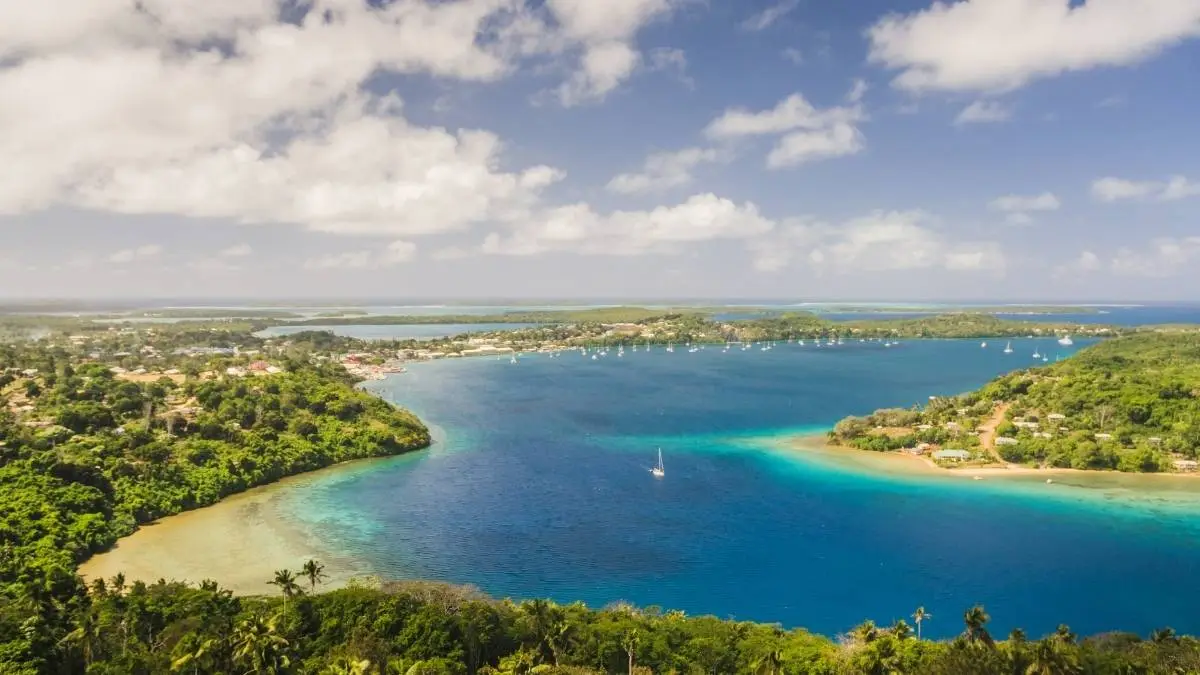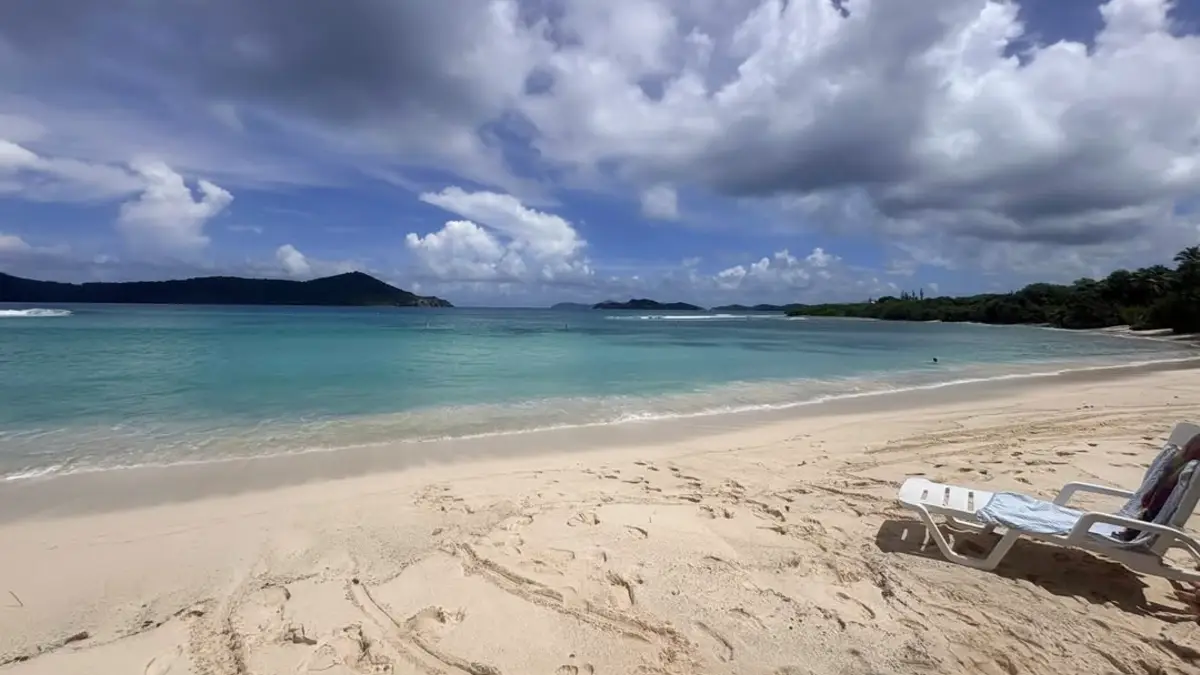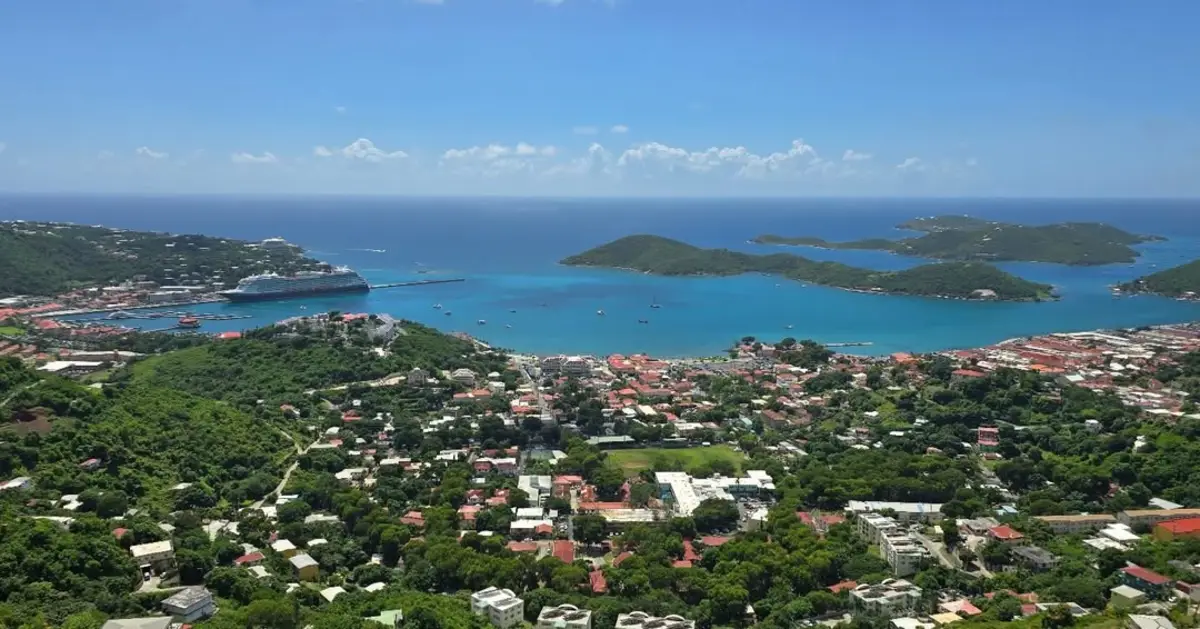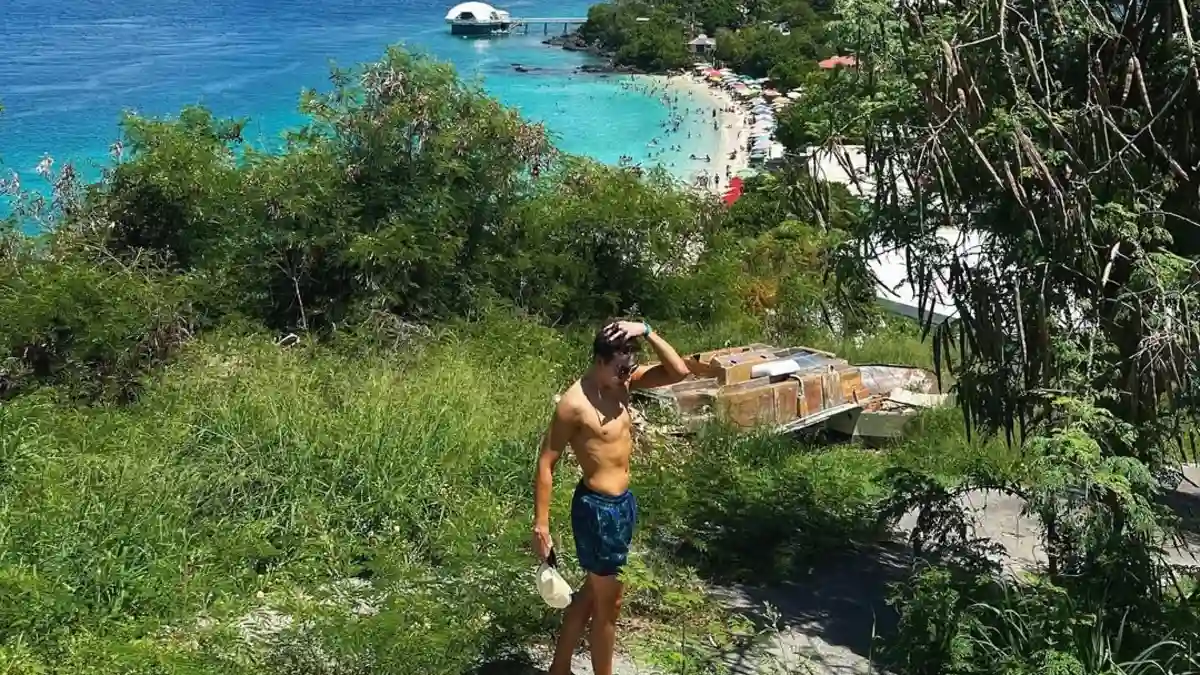There’s a place in America where the roads are too small for cars and the mail still arrives by boat. This isn’t a theme park. It’s Tangier Island, a tiny kingdom of ridges and waterways in the Chesapeake Bay, home to about 430 people.
Here, life moves at the pace of a golf cart, and the local economy is built on the hard work of watermen. But this isolated world, with its unique, centuries-old dialect and front-yard graves, is in a quiet fight for survival.
Scientists warn the island will be uninhabitable within a generation. You’re not just reading about a quirky travel spot; you’re witnessing the last days of a 200-year-old American culture. This is the story of Tangier, and why you must understand it now.
A Kingdom of Ridges and Waterways

The Car-Free Charm of a Different Pace
Life on Tangier happens on three low strips of land. They are called Main Ridge, Canton, and West Ridge. Small wooden bridges connect them over marshes and streams. The first thing you notice is that there are no cars.
Instead of traffic noise, you hear the quiet hum of electric golf carts and the sound of bicycles. These are how people get around. The roads are narrow, some just wide enough for two golf carts to pass.
This makes life move at a slower pace. Some people have said it feels like the fictional town of Mayberry. You can walk down “quiet pedestrian lanes” with simple homes on each side. Many have gardens in the front yard and views of the marsh, which creates a feeling of peace you don’t find on the mainland.
The Watermen’s World
The heart of Tangier is the Chesapeake Bay. The island is famous as the “soft-shell crab capital of the world”. This title comes from many years of hard work and skills passed down through families.
The local economy and way of life are tied to what they catch from the water. This is mainly crabbing in the summer and oystering in the winter.
You can see this everywhere you look. Crab shanties stand over the water, and yards are full of big stacks of orange and yellow crab pots.
For the “Tangiermen,” this is more than a job. Mayor James “Ooker” Eskridge has said it is a “way of life”. The new documentary Been Here Stay Here shows this deep link. It follows a family of watermen through several generations, showing how skills are passed from father to son.
This link to the water is both a blessing and a curse. The Bay gives the island everything it needs to survive.
But its rising waters and strong storms are also what threaten to destroy it. An islander in the movie said it well: “It’s ironic: the Bay gives, and the Bay takes away”.
Community and Faith
Life on this remote piece of land has created a tight community. Faith is at its center. The island has two churches that are very important to the social and spiritual life of the 430 or so people who live here.
The community is socially conservative. Alcohol is not sold on the island. If you bring your own, you should be careful not to drink it in public.
This shared faith gives the islanders strength to face their problems. Films about the island’s troubles have shown that the people here are not in denial. Instead, they have a deep love for their home, their community, and their faith.
The Echoes of a Bygone Era

The Tangier Dialect: A Linguistic Time Capsule
The most interesting part of Tangier’s isolation might be its dialect. Visitors often notice a special way of speaking. It sounds like a mix of a Southern American accent and something much older.
Experts have argued about where it came from for years. Some said it was a leftover from Elizabethan English, saved by the island’s remoteness. But newer studies suggest it more likely came from the speech of early settlers from Cornwall, England.
They were some of the first people to live here for good in the 17th and 18th centuries. Author Earl Swift, who lived on the island for a year, noticed the “Cornish lilt” and said it took him a while to fully get the accent.
This special dialect has its own words, like “calking” for a strong, windy storm. It is a direct result of the isolation that has shaped Tangier for centuries.
History Etched in a Small Space
To get the island’s present, you need to look at its past. The best place to start is the Tangier History Museum. People say it’s the first place you should go. The museum’s displays give a good look at the island’s long and interesting history.
The story starts long before colonists came. There is proof that Native Americans, probably from the Pocomoke nation, came to the island in the summer to fish and gather shellfish.
The first long-term European settlement was started by John Crockett’s family in the late 1700s. Many people on the island today can trace their family back to these first families.
The museum also tells about the island’s important part in the War of 1812. It was taken over by up to 1,200 British soldiers and was the base for Fort Albion.
A Landscape of Memory
On Tangier, history is not just in a museum; you can see it in the land itself. The clearest and most touching example is how families bury their dead in the front yards of their homes.
There is not much land, so this started out of need. But it has become a strong sign of the deep, family connection to their land over many generations. It is a constant reminder of the community’s roots and how life and death continue in a small, closed-off world.
This connection to the land is now in danger. This creates a strong link between the washing away of the land and the washing away of the culture. As the island gets smaller, so do the number of people living there.
The latest count showed a 30% drop from 2022. Young people who leave for college or the military almost never come back to live. The K-12 school, which used to have more students, now has fewer than 50.
As the physical island vanishes, the special world that has kept the unique dialect, the waterman traditions, and the close community for over 200 years is vanishing with it.
A Requiem for the Chesapeake

The Science of a Disappearing Island
A mix of environmental problems is wiping out Tangier. It is not just one thing, but three main threats.
These are global sea-level rise, which is happening faster in the Chesapeake Bay; erosion from stronger storms and tides; and the land itself slowly sinking. Dave Schulte is a climate change researcher who has studied the island a lot.
He co-wrote reports that say the island will have to be left in the next 25 to 30 years. Author Earl Swift saw this process speed up. He said that whole parts of the island he saw in the 1990s are now gone.
More frequent bad weather, like the strong Nor’easter in October 2025 that caused major flooding, is a regular and scary reminder of how weak the island is.
An Island’s Perspective
The story of Tangier’s end gets more complicated when you see it from the island. People on the outside and scientists see the problem as climate change. But many people who live there think the land loss is from erosion.
This is something they can see and that their families have fought for a long time. This view has led to a political situation that has gotten national news.
The island voted heavily for former President Donald Trump, who publicly questioned the danger of rising sea levels. After a news story pointed this out, the former president called Mayor Eskridge.
He promised not to worry about sea levels and that a protective wall would be built. That promise has not been kept. This view is not about ignoring the problem. It comes from a deep faith, a history of not trusting outsiders, and a life spent seeing the direct power of the Bay.
The documentary Been Here Stay Here tried to show this side of the story. It showed a community that is not ignorant but has a deep love for a place they will not leave.
The National Dilemma
The problem on Tangier Island is more than a local sad story; it shows a big problem for the whole country. As Earl Swift said so well, “The plight of Tangier should force us to come up with a rubric to decide what is worth saving”.
The island’s story makes us have a hard talk about which coastal towns America will choose to save as sea levels keep rising. The cost to fully protect and fix Tangier is thought to be between $250 and $350 million.
This is a huge amount for a community of less than 500 people. This has led to a lot of media attention, which is both good and bad. The attention can bring help and has led to some government money.
But it also risks making the people and their home a show for others to watch. Some news stories make the islanders feel like their lives are not being shown correctly.
The person who made Been Here Stay Here spent almost two years building trust on the island before even bringing a camera. This was to avoid the kind of reporting the community has grown to dislike.
An Explorer’s Guide to America’s Most Vulnerable Treasure

A visit to Tangier is a chance to help a weak economy and see a special part of American history. To plan a trip, you need to figure out how to get to this remote place. The tables below give a guide for people who want to visit.
Table 1: Charting Your Course to Tangier Island
| Departure Point | Operator / Boat Name | Contact / Website | Typical Season | Approx. Trip Time | Notes |
| Onancock, VA | Tangier-Onancock Ferry (“Joyce Marie II”) | tangierferry.com / 757-891-2505 | May – Oct | ~1 hour | Multiple daily runs. Payment by cash or check only. |
| Reedville, VA | Tangier Island Cruises (“Chesapeake Breeze”) | tangiercruise.com / 804-453-2628 | May – Oct | ~1.5 hours | Typically departs 10 AM, returns 3:30 PM. |
| Crisfield, MD | Tangier Island Cruises (“Steven Thomas”) | tangierislandcruises.com / 410-968-2338 | May – Oct | ~1.25 hours | Typically departs 12:30 PM, returns 5:15 PM. |
| Crisfield, MD | Sharon Kay III | 757-891-2440 | Year-round | Varies | Mail and passenger boat; often requires an overnight stay. |
Table 2: Your Tangier Island Itinerary: What to Do, See, and Savor
| Category | Activity / Experience | Details & Notes | Source Snippets |
| Explore | Rent a Golf Cart or Bicycle | The primary mode of transport. Rent from Four Brothers Crab House. Fun for teens in a safe environment. | |
| Tangier History Museum | Essential first stop. Learn the island’s unique history. Admission is ~$3. Also serves as visitor center. | ||
| Beachcombing & Relaxation | Visit the pristine, uncrowded southern beach. Search for arrowheads. A place for quiet reflection. | ||
| Experience | Kayak the Water Trails | Free kayaks available from the museum. Explore five color-coded trails through the marshes. Excellent for birdwatching. | |
| Watermen’s Tours | Take a guided tour with a local like Denny Crockett to learn about crabbing, birding, or see the sunset from the water. | ||
| Wildlife & Bird Watching | Look for brown pelicans, American oystercatchers, herons, and nesting terns and skimmers. The marshes are an ecological haven. | ||
| Eat | Hilda Crockett’s Chesapeake House | Famous for community-style meals: clam fritters, crab cakes, corn pudding. A Tangier institution. | |
| Lorraine’s on Tangier | Waterfront restaurant open year-round. Known for great sandwiches and divine crab soup. | ||
| Fisherman’s Corner | Another key spot for fresh, local seafood and crab specialties. | ||
| Four Brothers Crab House & Ice Cream Deck | Casual spot for seafood and ice cream; also where you rent golf carts. | ||
| Stay | Bed & Breakfasts | For an immersive experience, stay overnight. Options include Bay View Inn (open year-round), Sunset Inn, and Brigadune Inn. |


